At some point I will outgrown my available storage. It’s not in any way imminent, but down the road it will be something to deal with. Storage space wasn’t a consideration when I began to purchase relatively low cost university annuals on Ebay. Now that my collection has enlarged itself, I’m starting to question things. In all likelihood, I won’t answer my own questions honestly. “Nah, don’t worry! Still plenty of space. Plenty. It’s ok. Go ahead. Click on ‘Complete Your Purchase.” I lose these arguments most of the time. Ok, all of the time.
My logic is this: if I can pick up an annual from years past for the same price I would pay for a single photograph of a fencing POI (Person of Interest), then buying a university annual that has one, sometimes two, photographs I’m interested in, equates, but comes with a ton more pages than I need. Like, 450 more pages. Some of these old annuals are freakin’ huge. And heavy. Fortunately the shipping costs for book rate at the USPS isn’t too bad, so that doesn’t run up the price. It’s just that after I scan the one or two pages, I’m left with a rather large and unwieldy artifact.
Let’s face it. I’m unlikely to stop buying them. Let’s move on.
Here’s how this got started. I subscribed to a very handy service, e-yearbooks.com, about 2 years ago. It’s not terribly expensive and while they don’t have every single West-Coast college or university in their scans database, they have enough of them to make it a worthwhile stop when I’m trying to track down information or an image of someone I’m researching. Case in point, POI Al Snyder, Stanford graduate, who won the US National foil title in 1944. He only had one arm. He’s in several years’ worth of the Stanford Quad’s photos of their fencing team under the “Minor Sports” category, and he’s usually next to POI Harry Maloney, longtime Stanford fencing coach. So e-yearbooks is a great source, but the available images from their scans are not terribly high resolution. They don’t hold up when zooming in on a page. On top of that, the printing process for annuals doesn’t result in terribly great resolution either. That leaves me with blurry images of people I really wanted a better picture of. And so began the purchasing of cheap copies of university annuals. They typically run $25-$30 on Ebay. Ones with someone famous, like John Wayne at USC, runs the price up over $100. I’m not buying in that market. I go for ones that are described as “fair” or “complete, but loose binding” or some other notation that means it’s all there, but not in mint condition. If the price is right, I’ll try to snap it up. So far I have fifteen of them.
For the moment, I’ve contained my purchases to just a handful of universities: Stanford, UC Berkeley, USC and UCLA. However, in perusing what’s available on e-yearbook, I’ve found 21 western schools that have fencing, put it in their annual, and e-yearbook has scanned it. That’s a fair number of moving parts, but as I’m getting results, no complaints. The earliest group photo I’ve seen so far is from Stanford, circa 1915, although the sport is mentioned as early as 1910. Harry Maloney started teaching there in 1908, but fencing doesn’t come up in a search in those earliest annuals. I may have to go through them one page at a time. Tedious, doing it online.
The first one I bought is both the oldest and the most tattered. By a fair bit. No cover, no spine, but all the interior pages are there. It was cheap, from 1925 and was from UC Berkeley. I bought this one quite awhile ago, before I subscribed to e-yearbooks and now I can’t remember exactly why. I think I picked it up because it was very cheap due to its poor condition and because one of the graduates that year was Hamilton Luske, who went on to become a Disney animator and director. There are some cartoons by him in the annual to go along with the fencers:
The pages of the UC Berkeley Blue and Gold are the only reference I have to “Coach Blesse”. Thanks to consistency in reference on the part of the editors of the annuals from year to year, I don’t even know his first name. Coach Blesse is how he is referred to in every entry I’ve seen of him. I call that unhelpful.
What I do know about UC Berkeley is that they have always had a lackadaisical approach to providing a coach for their fencers. One year there’s money, the next, none. Based on what I’ve seen, there isn’t a great deal more to be seen of fencers earlier than this entry at Cal. 1917 has a group of men and women fencers and a mention of another coach I don’t know anything about, one Coach Randolph. Again, not a great lead. And it seems like every other year states that the fencing group has been ‘reorganized with lots of interest’. The only other Cal yearbook I’ve picked up is a much later edition.
From the 1959 Cal Blue and Gold comes this photo of George Piller, a couple of his fencers and a comical cartoon, one very much in step with the design sensibility of the times. This page also features the below portrait of the team:
Daniel De La O is a fencer who gained a local reputation and won some tournaments. I don’t know the other three (not counting Magay and Piller), but they must have been a strong enough group to handle everyone up and down the coast that season.
Here’s the thing about Cal, and the above photo epitomizes the issue I have with their overall care and feeding of the fencing program. Standing in the center of this photo are one of the finest fencers and one of the finest coaches at that time. On the planet. They won everything at the collegiate level locally, Dan was two-time defending US National sabre champ at this time, not to mention the Olympic Gold he won with Hungary and yet… well, here’s the story as I heard it from Jerry Biagini this past week. Piller, who had coached at the highest level of his sport in the world for 20 years, couldn’t get the Cal athletics director to take a meeting with him. Piller wanted to request that Cal send Dan Magay to the NCAA championships in 1959. Olympian, National Champion, Western Collegiate Champion. But no. The AD wouldn’t give Piller enough time to even make the request. Magay would have been up against a field that included future Olympians Alfonso Morales and Michael D’Asaro. At that time, I suspect Magay might well have gone undefeated. But it was not to be.
The Stanford Quad I started picking up due to my interest in a number of people who either went through or coached in that program. Notably, Harry Maloney and Elwyn Bugge, coaches, and fencers Al Snyder and John McDougall. John became a fencing master and founder of a number of clubs, as well as founding American Fencers Supply in San Francisco. He’s also a major contributor to this Archive and one of the people that resuscitated the Halberstadt club upon Hans’ death in 1966. Al Snyder was a one-armed US National foil champion and there just aren’t many photos of him around. Andy Shaw at the Museum of American Fencing has only a couple, but Al shows up the Stanford Quad several years in a row, so that’s what got me into the market for these.
The 1933 Stanford Farmers fencing crew, circa 1933.
This 1933 photo shows coach Harry Maloney, his successor Elwyn Bugge, who took over many of the fencing duties around 1928, and future National Champ Al Snyder. Al had lost his right arm in an accident as a child, so he fenced with his left hand. In every Stanford group portrait like this, he has turned in profile to make it hard to note that he only has one arm. Jerry Biagini told me a bit about Al this past week, remembering him as being lightning fast and very smart. By the time he won Nationals, Snyder was representing Salle Santelli in New York. My assumption is that he moved East after grad school at Stanford and familiarized himself with the NY crew, which probably helped him with Nationals judging in that pre-electric era. I’m pretty sure Al was the first West Coast incubated fencer to win a US National title. A couple others had come close; Andrew Boyd, epee, took 3rd in 1936 and Al Carfagno, foil, took 2nd in 1939.
The photo at the top of this story is from the 1929 edition of the Stanford Quad and is the earliest I have from that school. They definitely have photo representation in earlier editions, including some great group shots of Maloney as a much younger man with a large group of fencers from his women’s class. I’ll keep looking for cheap copies to come my way, although the pre-1920s era books tend to go high regardless of condition.
Al Snyder is in the front row next to Maloney in this picture from 1937. Snyder was a graduate student by this time and an Open Division Pacific Coast Champion.
Another of the fencers here in the front row is “Bowen”. He may or may not be the sponsor of the Bowen Trophy that came around a few years later. The origin of that long-standing tournament and trophy isn’t one I’ve tracked down yet, but now that I’m typing this I’m remembering that Jerry Biagini has one. I’ll have to ask him what he knows next time I’m over there.
The Stanford women of 1941.
It’s not clear that the women were involved in intercollegiate competitions at this point in time. The references I’ve seen in the annuals – we’re talking 1930s and 1940s mostly – don’t mention the women fencing in anything other than classes. I’m not even sure they had intramural competitions for the women. Clearly some research needs to be done to figure out when the women began to have inter-school tournaments out here in the West. It was happening in the East beginning around 1929. At least, that’s when the NIWFA began hosting a championship. What had been done prior to that between individual schools, I don’t know. But I can’t find reference to intercollegiate competitions in these years, so I’ve got some digging to do to find out when the Western university women began throwing down gauntlets with other schools. It’s also interesting to me that I haven’t seen a great number of the women in these annuals transition to local women’s competitions through the (then) AFLA. Some of them surely must have, but I haven’t been able to match names from these annuals to AFLA tournament results yet. It’s possible that at this time, the university-level fencing classes for women simply weren’t stressing competition out here in the West. Puzzling.
I only have one annual from UCLA so far, and this one by mistake. I thought it was a UC Berkeley annual. UC Berkeley and UCLA were the two earliest schools in California’s UC system and until there were others, UCLA was often referred to as the University of California, Southern Campus. The Ebay listing just said “University of California”, which, since Cal Berkeley was first, is why I thought this would be a Cal annual. Nope. Southern Campus is spelled out big as life on the cover.
The UCLA varsity squad from 1931. Prior to 1931, the coach at UCLA was Captain John Duff who is a fascinating character. He only taught there a few years, but it was long enough to create one Olympic athlete, Hal Corbin, who was on the 1932 US epee squad. (See Duff’s story here.)
The last photo of Duff in the UCLA annuals is 1930, so I just missed his presence in this book by a year. Still, fencing, 1931, at UCLA, and I’ll have to trust to luck that some earlier ones come along in my price range someday.
The last school in my collection is USC. The Trojans have hosted a number of coaches over the years that I’m interested in. Henri Uyttenhove, Jean Heremans, Ferenc Zold and Mel North all spent time there as coach. Muriel Bower may also have coached there for a time, helping out Heremans and getting her first experience as a collegiate coach. Pretty sure. Still need to transcribe my 2 hour conversation with Muriel.
USC’s El Rodeo of 1937 features this photo that includes Henri Uyttenhove, one of my current favorite subjects.
Uyttenhove’s presence in USC’s annual, the El Rodeo, is certainly the reason I’ve picked up the copies I’ve grabbed from this school. He taught there a long time, was an excellent coach and produced a great number of really terrific fencers. His Trojans dominated the West Coast collegiate fencing during his time as coach. I’m still unclear on the full run of his years there, but certainly he taught there from sometime in the 1920s until his retirement around 1946 or so. There may have been a few years off, as funding for fencing at the best of times can still come under fire from other programs with more clout.
Another fencer out of USC’s Uyttenhove years is Deloss McGraw. Andy Shaw has some pictures of McGraw that he’s going to share with me. Apparently McGraw’s son and grandson visited Andy back in LA at the Westside Fencing Center and shared some memories with him. I also have a photo from my scans of the Muriel Bower scrapbook that shows McGraw teaching side by side with Uyttenhove at the LA Athletic Club, so he may have also functioned as an assistant for a time.
Trojan fencer Deloss McGraw from 1939.
Now, Andy also told me that Uyttenhove and McGraw had a falling out due to a rather personal dispute. Certainly McGraw, who was making a reputation for himself in regional competitions in the years leading up to WW2, dropped out of site not long after his graduation from USC. The reasons for this may well relate to his falling out with Uyttenhove, but up until that time, he was certainly a rising star.
So that’s where the collection stands today. I confess, I’ll likely continue to pick these up when the price is right and just bite the bullet on finding a place to put them all. I’m too averse to book destruction to cut out the pages I care about and discard the rest. Just thinking about that makes me shudder. And I’m too obsessive/possessive to scan what I want and re-sell them. I’ll just have to continue to find creative ways to find places to stash them unobtrusively. It’s working for now. Fortunately.

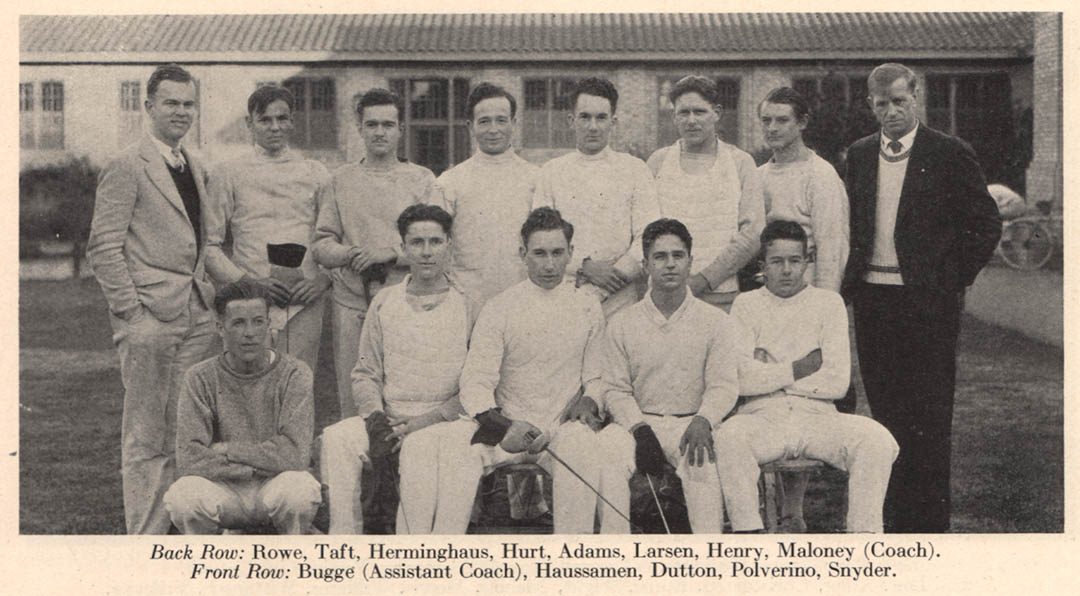
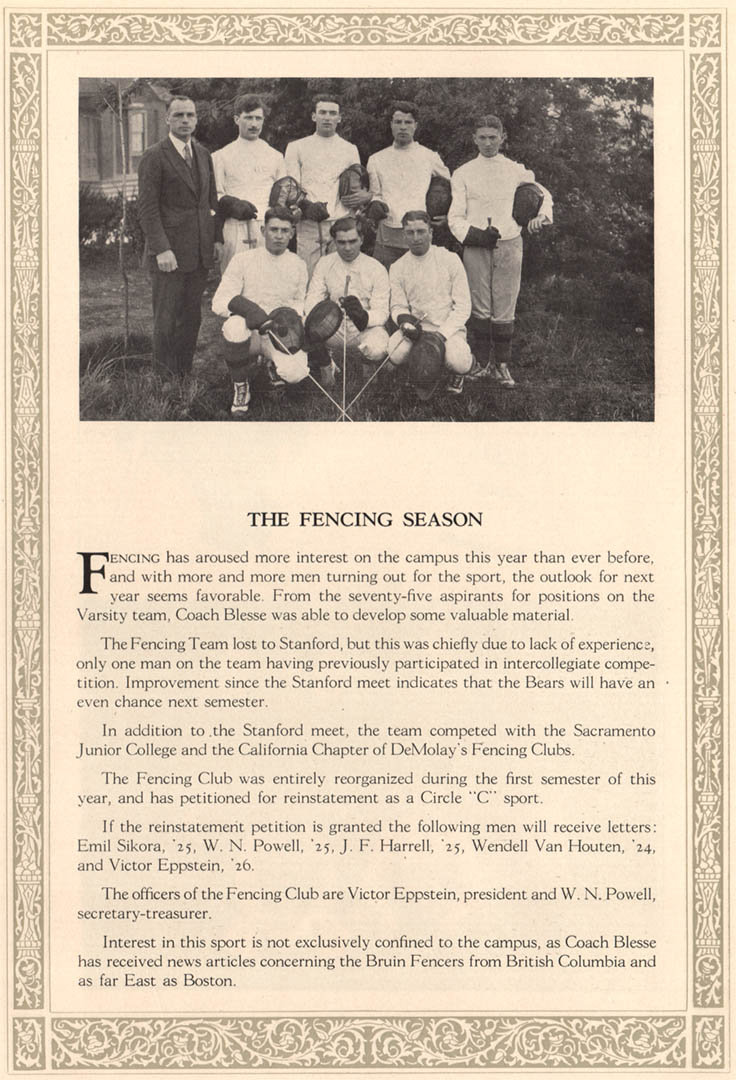
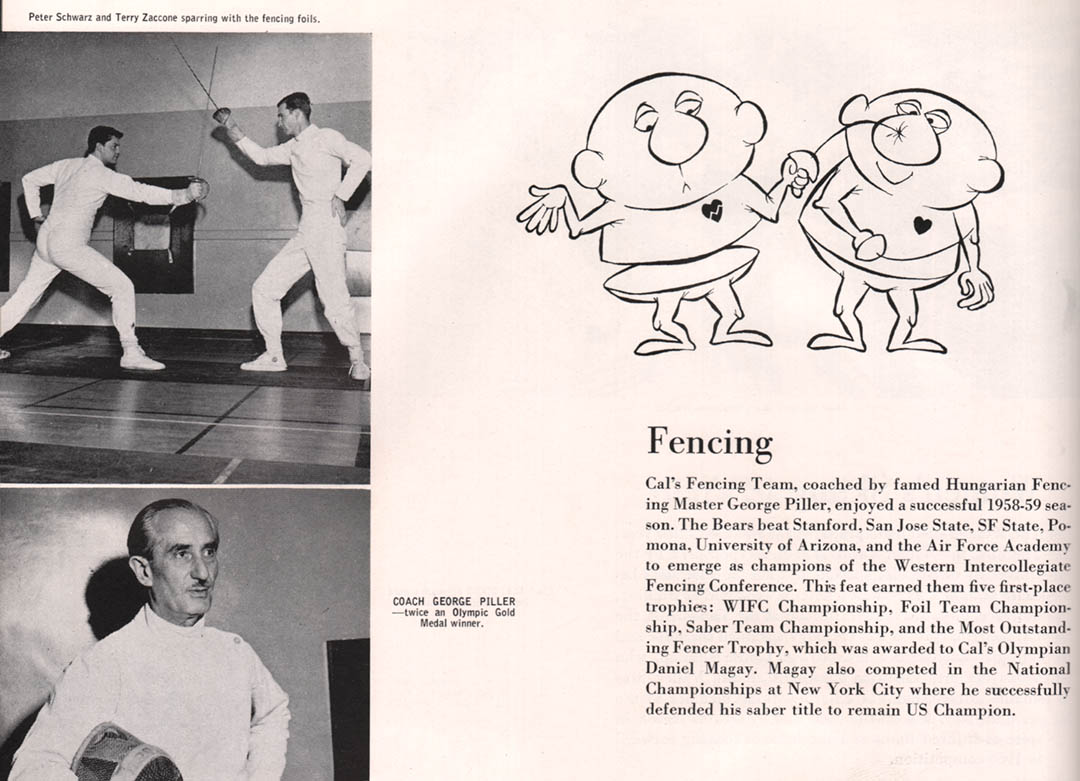
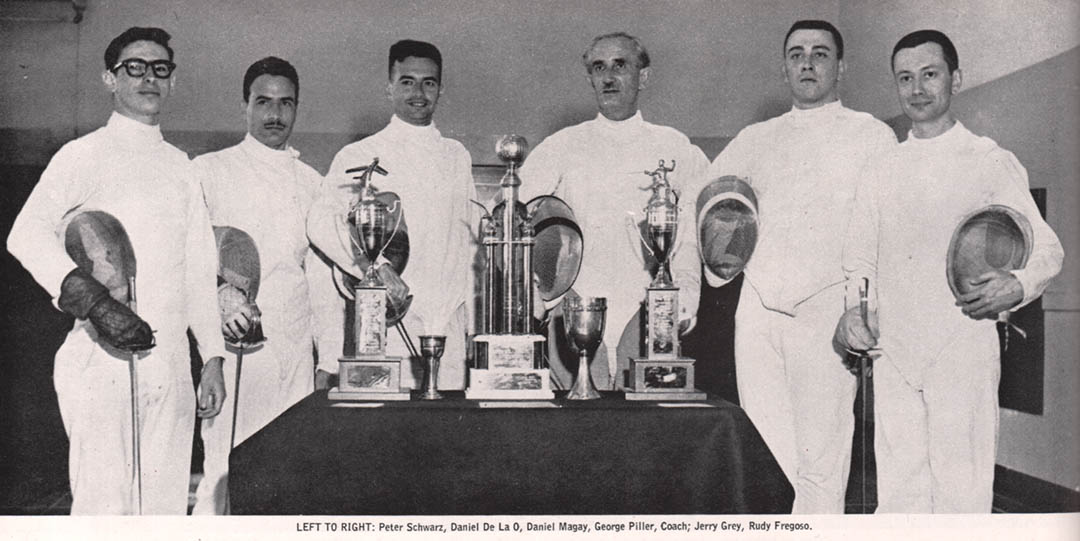
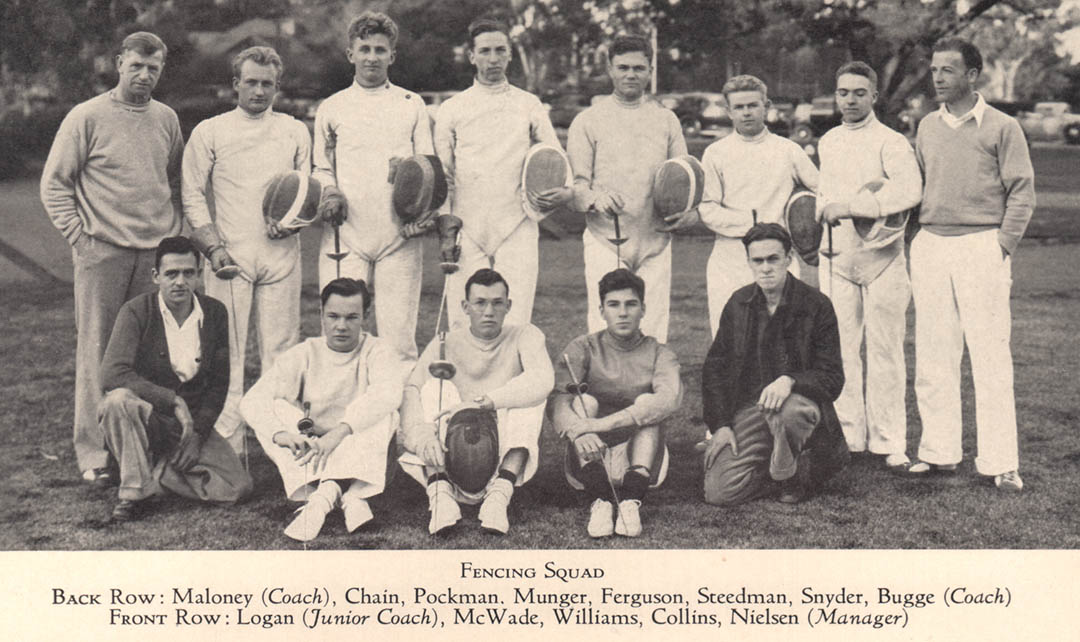
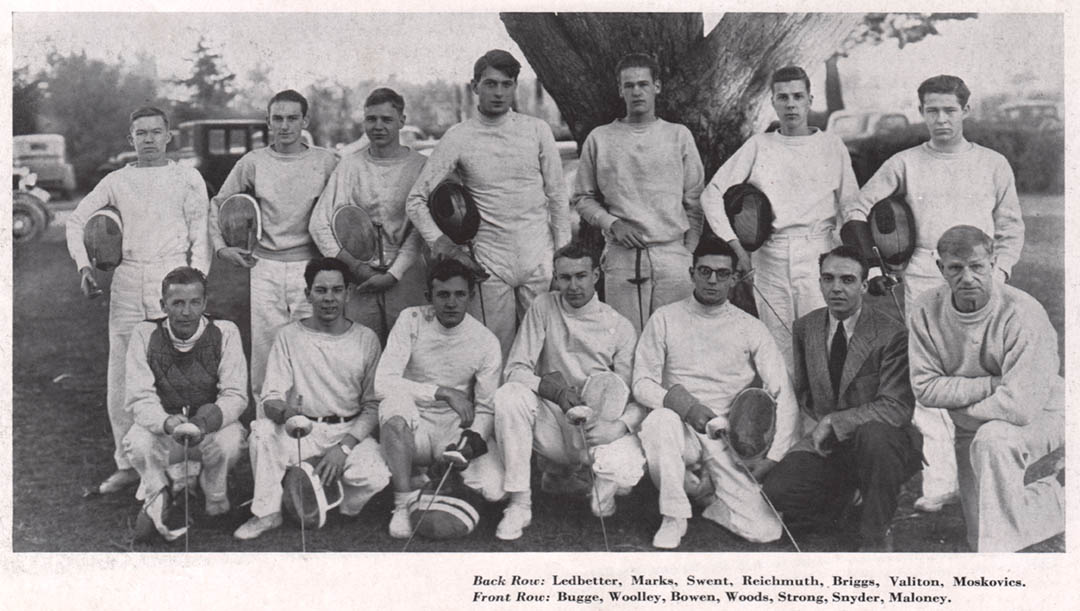
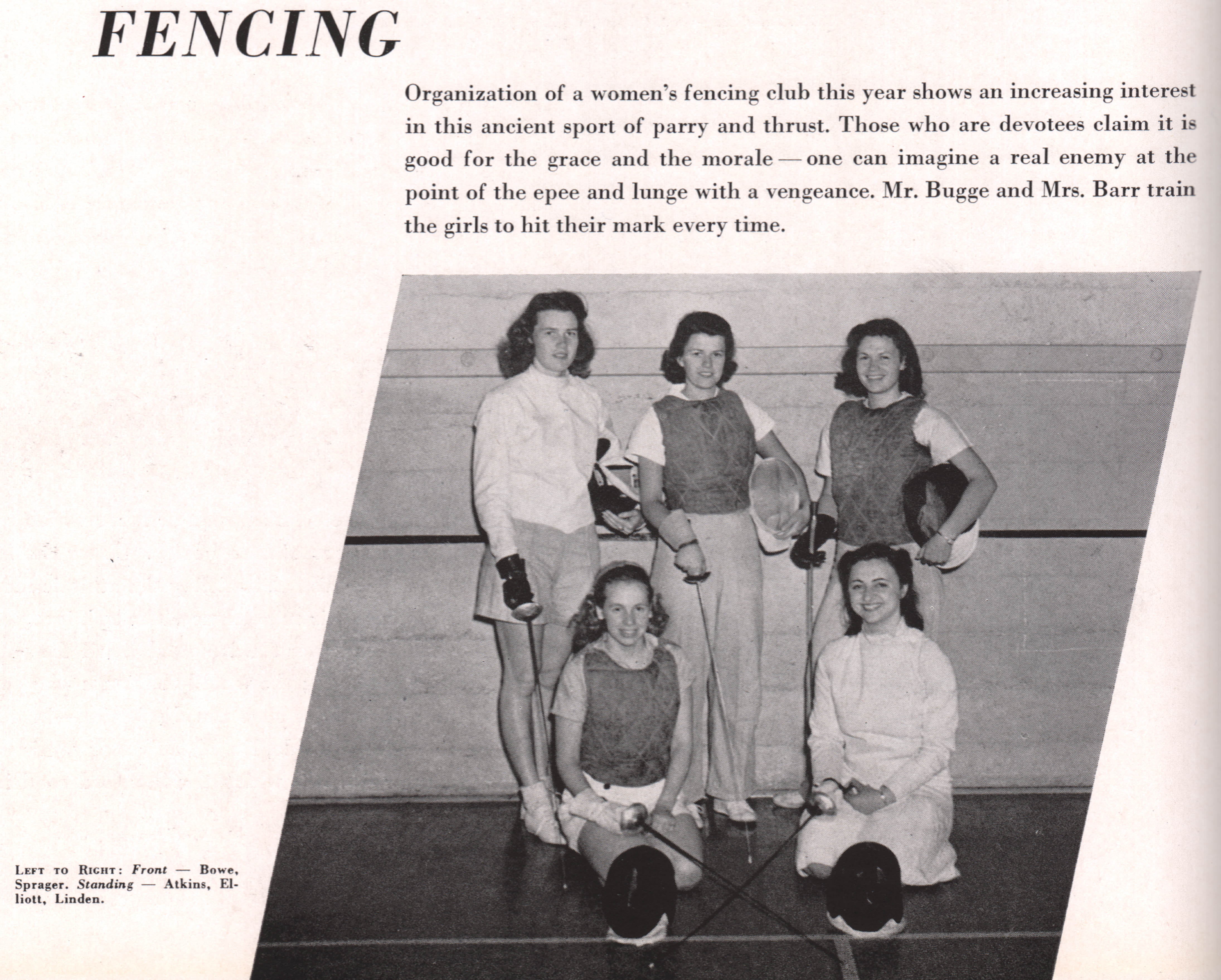
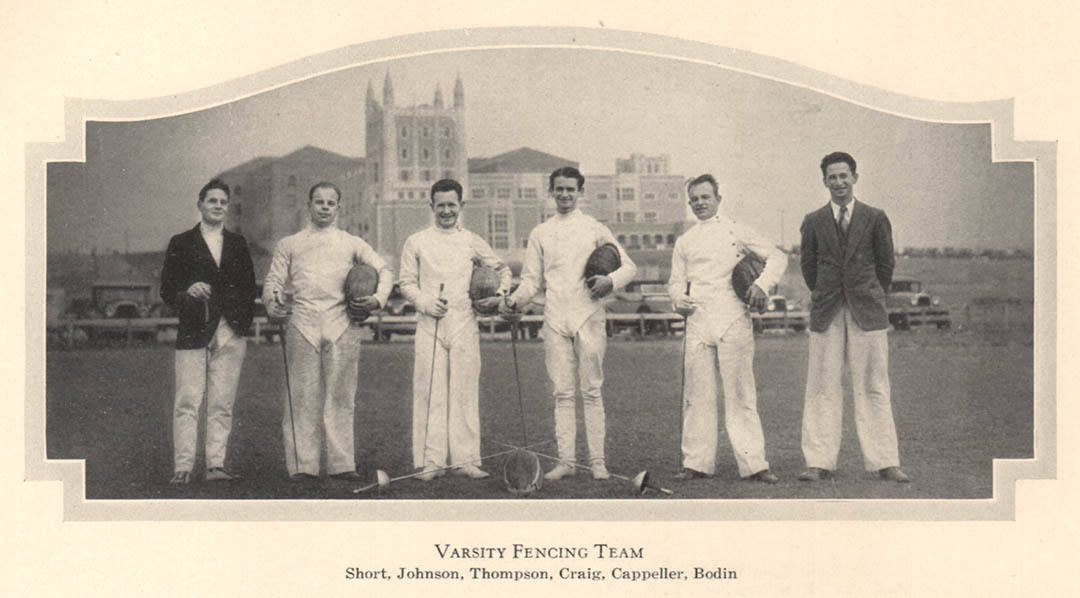
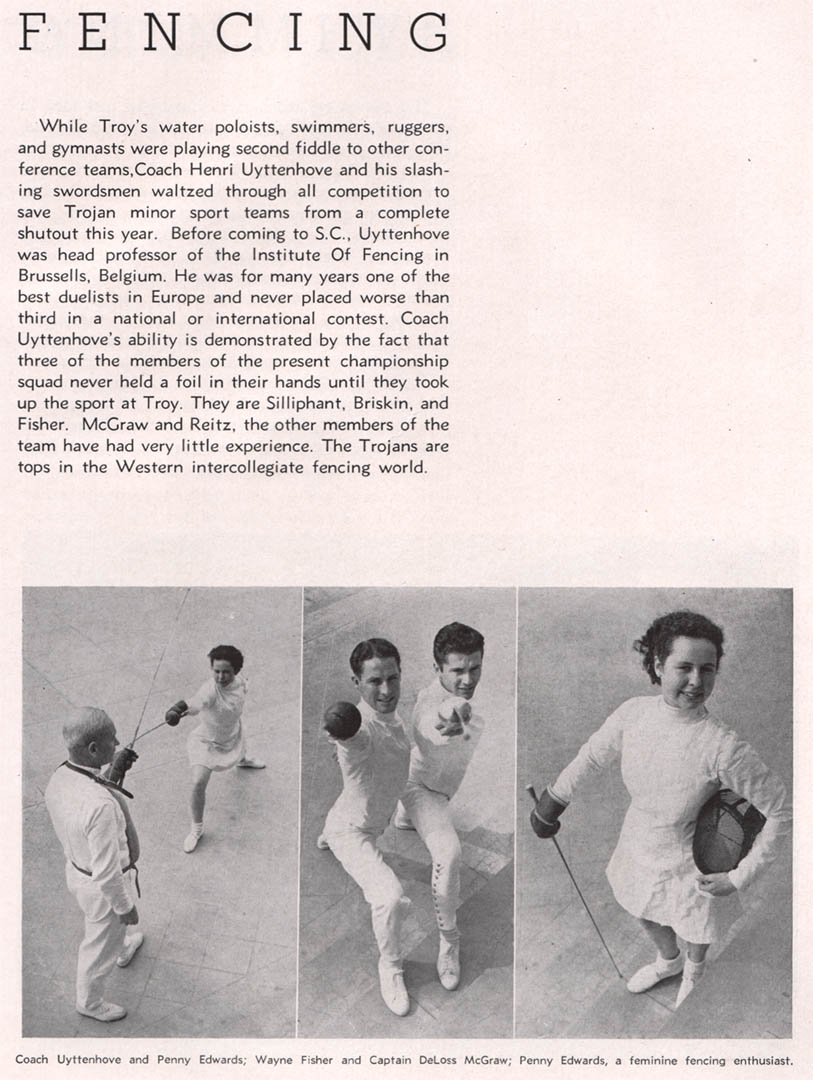
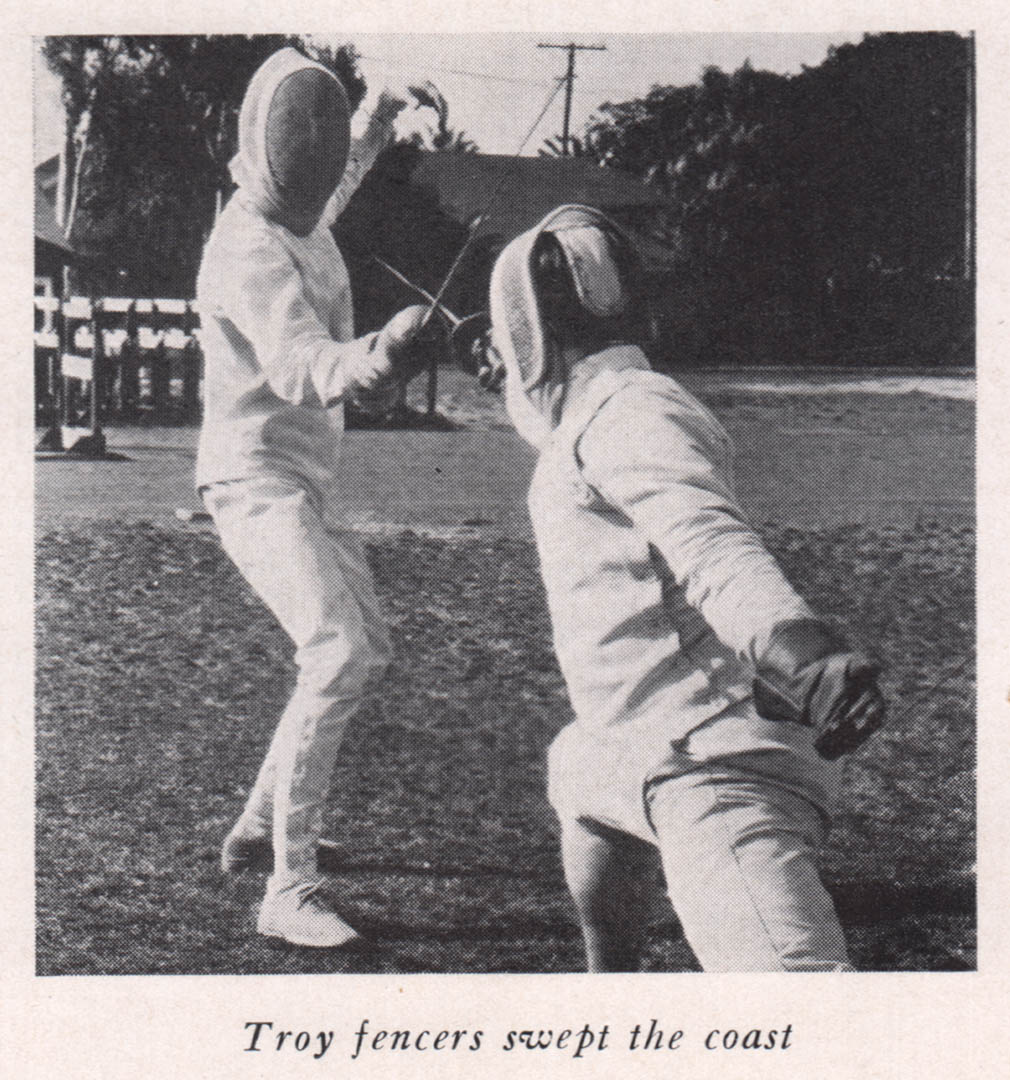
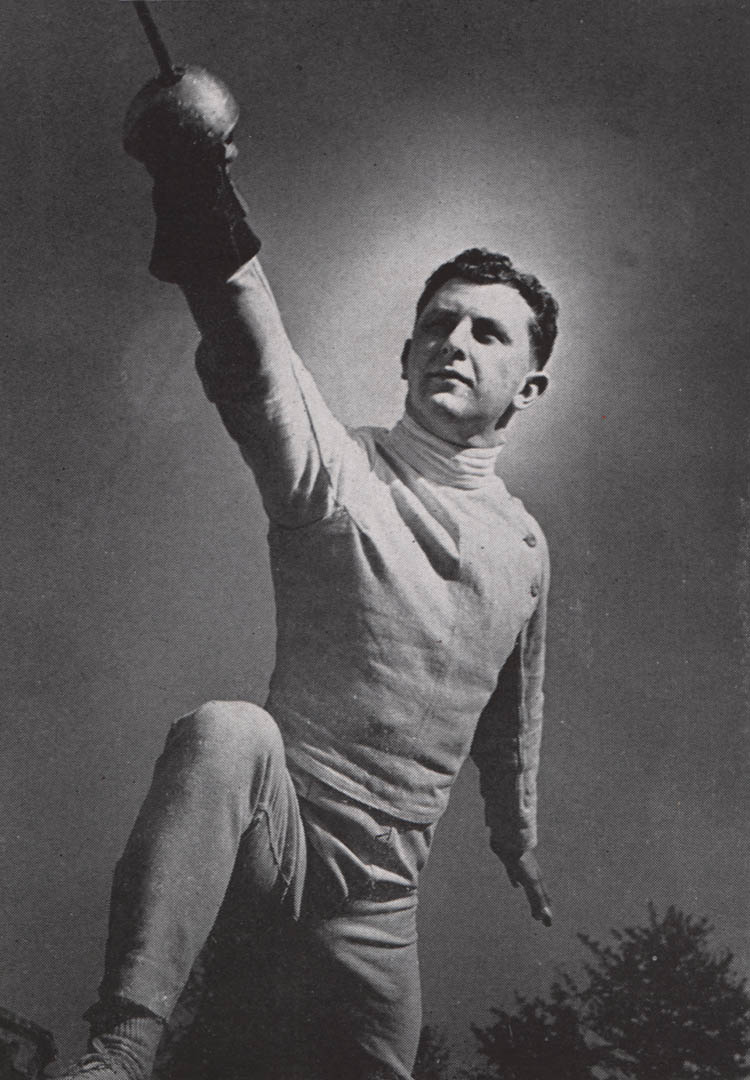
Hi Doug,
Haven’t talked to you in some time. Maybe we could touch base sometime soon and I can catch up on your progress.
Harry Maloney
Great GrandFather